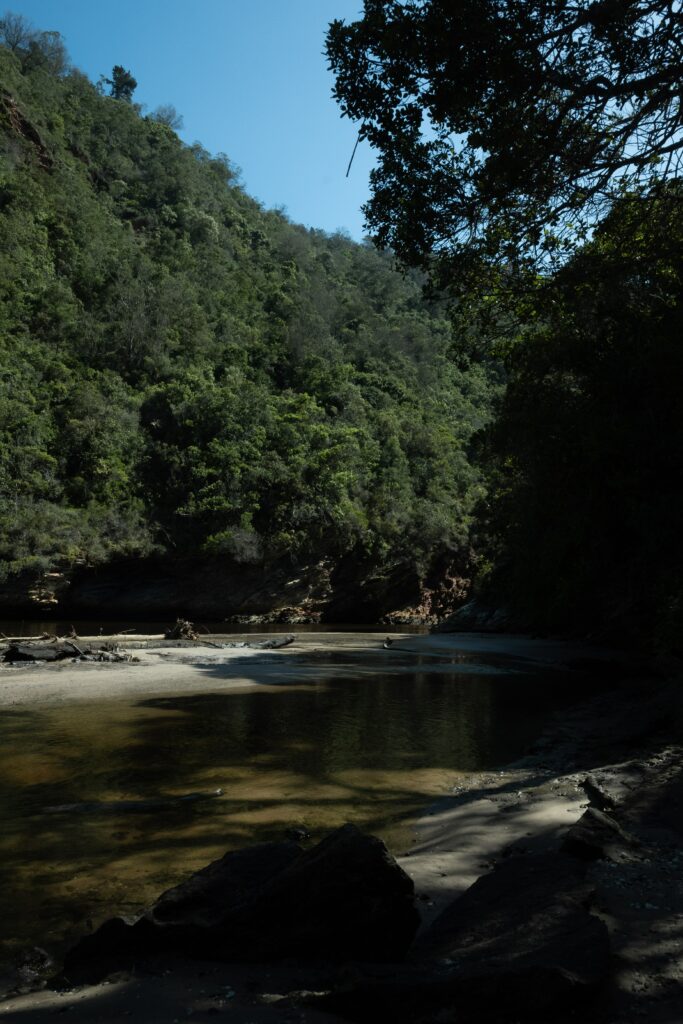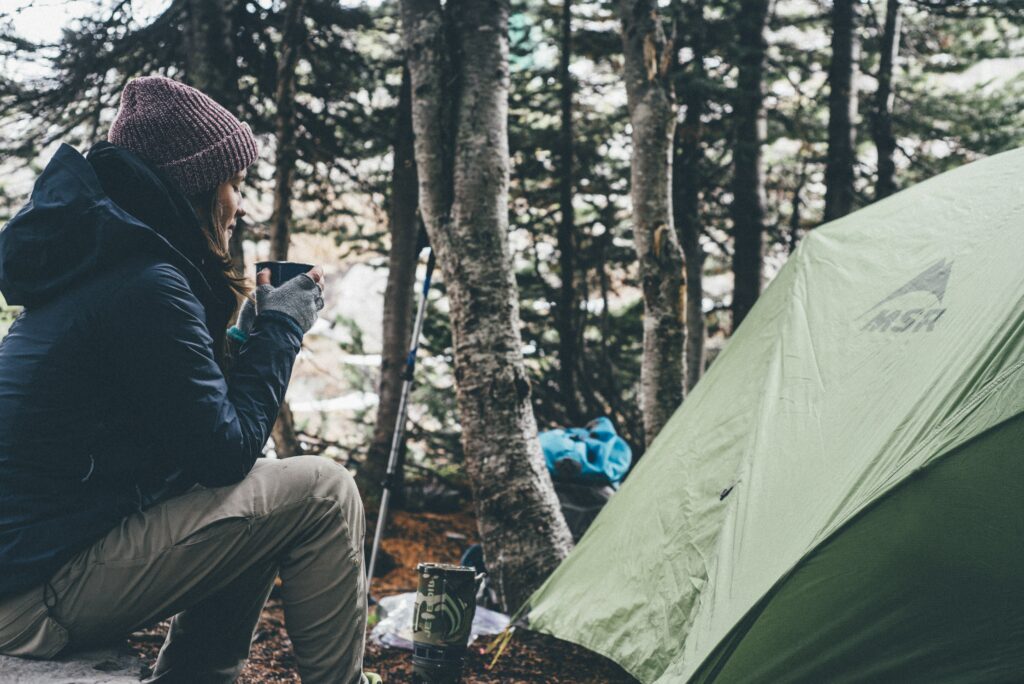In a world where unforeseen circumstances can arise at any moment, having essential survival skills is crucial. From basic first aid knowledge to building a shelter in the wilderness, these skills can mean the difference between life and death. This article will explore the importance of learning these essential survival skills and provide practical tips on how to develop them. Whether you are an avid adventurer or simply want to be prepared for emergencies, mastering these skills is an invaluable asset that can empower you to navigate even the most challenging situations. Survival skills are essential tools that can potentially mean the difference between life and death in a wilderness or emergency situation. Whether you find yourself lost in the woods, stranded on a remote island, or facing a natural disaster, having a set of fundamental survival skills can greatly increase your chances of staying safe and making it out alive. In this comprehensive article, we will explore ten essential survival skills that everyone should know. From building shelter to developing mental resilience, these skills will equip you with the knowledge and techniques needed to survive and thrive in the great outdoors.
Building Shelter
When you find yourself in a survival situation, one of the first tasks you should prioritize is building a shelter. A shelter provides protection from the elements, keeps you warm, and offers a sense of security. Before constructing your shelter, it is important to assess your surroundings. Look for natural formations, such as caves or rock overhangs, that may serve as a ready-made shelter. If no pre-existing structures are available, you will need to choose the right type of shelter based on the climate and terrain. In colder environments, an insulated shelter like a snow cave or debris hut may be necessary, while a simple lean-to can suffice in milder conditions.
Gathering suitable materials is the next step in building a shelter. Look for branches, leaves, and other natural debris that can be used to construct the frame and provide insulation. Pine needles and dry grass can be used as bedding or an additional layer of insulation. Once you have gathered the necessary materials, you can begin constructing your shelter. Take into account factors such as wind direction and the slope of the land to ensure stability and comfort. Maintaining your shelter is also crucial, as harsh weather conditions can cause damage. Regularly check for any weak points or leaks and repair them promptly to keep your shelter secure.
Finding and Purifying Water
Water is one of the most crucial resources for survival. Without access to clean and safe water, dehydration can quickly set in, leading to a myriad of health problems. When in the wilderness, knowing how to find and purify water is essential. Start by familiarizing yourself with common water sources in the area, such as rivers, streams, and lakes. If no obvious sources are available, keep an eye out for signs of water, such as animal tracks or lush vegetation, which often indicate the presence of water nearby.
Once you have located a water source, it is important to purify the water before consuming it to avoid potential illnesses. There are various methods of water purification, including boiling, using water filters or purification tablets, and constructing a solar still. Boiling water is the most effective method, as it kills most microorganisms that can cause waterborne diseases. Filtering the water with a cloth or using a portable water filter can remove larger particles and impurities. Purification tablets are another convenient option, as they contain chemicals that kill harmful microorganisms. In emergency situations, when purification methods are not readily available, constructing a solar still can help remove impurities by using the heat from the sun to evaporate water and collect the condensation.
Collecting and storing water is also an important consideration. Once you have obtained a safe water source, it is essential to collect and store enough water to meet your needs. Carry a sturdy water container or utilize natural resources, such as large leaves or animal bladders, to store water. Remember to protect your water source from contamination by keeping it covered and away from potential pollutants.

Starting a Fire
Fire has been a vital tool for survival since the early days of human civilization. It provides warmth, light, and a means to cook food. Additionally, fire can be used for signaling rescuers or deterring wildlife. In a survival situation, knowing how to start a fire is crucial. The first step is to find suitable firewood. Look for dry wood that easily catches fire, such as dead branches or fallen trees. Collect different sizes of firewood, including tinder (small, dry twigs and leaves), kindling (larger sticks), and fuel (thicker logs).
Building a fire structure is the next step. There are several types of fire structures to choose from, including the teepee, lean-to, and log cabin. Each structure has its own advantages, depending on the weather conditions and available resources. Gather your firewood and arrange it in the chosen structure, leaving enough space for air to circulate. When lighting the fire, start with the tinder and gradually add the kindling and fuel as the fire grows. Mastering fire-making techniques such as using a fire starter, bow drill, or flint and steel can significantly increase your chances of successfully starting a fire.
Once you have established a fire, it is important to maintain and extinguish it properly. Regularly add fuel to keep the fire burning steadily, but avoid overcrowding it with too much wood, as this can smother the flames. When you are ready to extinguish the fire, carefully pour water over the flames, making sure to fully extinguish any embers or hot spots. Stir the ashes and test for heat before leaving the fire site to ensure it is completely out. Always practice fire safety to prevent forest fires and minimize environmental impact.
Navigating in the Wilderness
When you are lost or displaced in the wilderness, knowing how to navigate effectively is essential for finding your way back to civilization. Natural navigation tools, such as the sun, moon, and stars, can help determine your general direction. The sun rises in the east and sets in the west, which can provide a basic reference point during daylight hours. At night, you can use the North Star (Polaris) as a fixed point to identify the northern direction.
Reading maps and using compasses is another crucial skill for wilderness navigation. Always carry a detailed topographic map of the area you are exploring and learn how to read it. A compass can help you determine your direction more accurately and prevent you from going in circles. Familiarize yourself with the different map symbols and landmarks to identify key points of reference. Be aware of alternative navigation methods, such as using landmarks or following natural features like rivers or mountain ranges.
Orienting yourself with celestial bodies can also aid in navigation. By observing the movement of celestial bodies, such as the sun or moon, you can estimate your direction and approximate time. Learning basic celestial navigation techniques can be a valuable skill when other methods are unavailable or less reliable.
Different terrains and weather conditions can affect navigation techniques. In dense forests or areas with limited visibility, using natural sounds or scents can help you find your way. Pay attention to prevailing winds, animal trails, or water sources, as these often lead to larger paths or human settlements. In extreme weather conditions, such as heavy fog or snowstorms, it may be safer to stay put and wait for conditions to improve rather than risk getting further lost.

Finding Food
In a survival situation, finding food to sustain yourself is a top priority. While it may not be as easy as ordering takeout, there are several ways to procure food in the wilderness. Identifying edible plants and fungi is a valuable skill that can provide a nutritional boost when meat sources are scarce. Familiarize yourself with local plants and learn to differentiate between edible and poisonous species. Look for common edible plants such as dandelion, cattail, and wild berries. Avoid plants with milky sap or red berries, as they are often toxic.
Tracking and trapping animals can be an effective method of securing a source of protein. Learn to recognize animal tracks and signs, such as scat or disturbed vegetation, to locate potential prey. Constructing traps or snares can help capture small mammals or birds. Research local trapping laws and regulations before attempting this method, as some areas may have restrictions on hunting or trapping without a license.
Fishing and hunting are other options for obtaining food in the wilderness. Fish can be caught using various techniques such as hand lines, nets, or improvised fishing gear. In areas with larger game, hunting with a bow and arrow or other primitive weapons may be necessary. It is essential to learn the appropriate hunting methods and respect local wildlife to ensure ethical and sustainable practices.
Once you have successfully procured food, it is important to know how to prepare and cook it properly. Gutting and cleaning fish or animals is necessary to remove any potential contaminants or parasites. Cooking wild food thoroughly helps kill bacteria and parasites, reducing the risk of foodborne illnesses. Improvising cooking utensils, such as skewers or flat rocks, can be helpful when you don’t have access to conventional cookware.
Basic First Aid
In any survival situation, accidents and injuries are bound to happen. Basic first aid skills can help you manage injuries and illnesses until help arrives or you can reach medical assistance. Assessing injuries and prioritizing treatment is crucial to determine the severity of the situation and provide appropriate care. Prioritize life-threatening conditions, such as severe bleeding or difficulty breathing, and administer immediate care.
Administering CPR and basic life support can be life-saving in emergency situations. CPR (Cardiopulmonary Resuscitation) is a technique used to revive a person whose heart has stopped beating or who is not breathing. This skill can be invaluable if you encounter someone in cardiac arrest or drowning. Learning how to perform chest compressions and rescue breaths effectively can greatly increase the chances of survival.
Treating cuts, wounds, and fractures is another important aspect of basic first aid. Clean and disinfect wounds to prevent infection, and dress them appropriately based on the severity and location. Knowing how to immobilize fractures or deal with sprains and strains can help reduce further damage and alleviate pain.
Recognizing and managing common wilderness illnesses is also essential for survival. Understanding the symptoms and treatments for conditions such as hypothermia, heatstroke, dehydration, and snake bites can make a significant difference in your ability to handle these situations effectively. Carry a basic first aid kit with essential supplies and medications tailored to your needs and the environment you are in.

Creating Signaling and Communication Devices
When you find yourself in a survival situation, being able to communicate with rescuers or other people is crucial. Creating signaling devices can help attract attention and improve your chances of being located. Building distress signals is a primary method of alerting others to your presence. Use materials such as bright cloth, reflective surfaces, or smoke to create visible signals. Three short whistle blasts or continuous shouting can also indicate that you are in need of assistance.
Mirror reflections and smoke can be used as effective signaling methods. A small mirror or any reflective surface, such as a watch face or compact, can reflect sunlight and catch the attention of rescuers from a distance. Similarly, creating a smoke signal by building a fire and adding green vegetation or damp materials can produce thick smoke that is highly visible against the sky.
Constructing basic communication devices can also aid in your rescue. Use materials such as rocks, sticks, or shells to create a simple alphabet or symbols that can be easily understood by others. Learning Morse code, a system of transmitting messages using short and long signals, can help you communicate effectively using sound or light signals.
Making Tools and Weapons
In a survival situation, having the ability to make and utilize tools and weapons from natural resources can greatly increase your chances of survival. Utilizing natural resources for tool-making is a valuable skill. Learn to identify rocks with suitable characteristics for making sharp edges, such as flint or obsidian. These rocks can be used to create cutting or scraping tools. Additionally, wood can be fashioned into handles or shafts for various tools and weapons.
Constructing snares, traps, and weapons is essential for procuring food and self-defense. Snares can be made from natural fibers or improvised materials and are effective for trapping small game. Learn to set snares in areas with animal activity, such as game trails or near food sources. Traps can also be constructed using sticks and natural materials to capture larger animals. However, it is important to be knowledgeable about local trapping regulations and respect wildlife conservation principles.
Sharpening and maintaining tools is crucial to ensure their effectiveness. Learn how to maintain a sharp edge on cutting tools, such as knives or axes, using natural sharpening stones or improvised methods. Regularly check the condition of your tools and replace or repair them as needed. Additionally, try to improvise tools from everyday items you may have with you, such as using a can lid as a makeshift knife or a sturdy branch as a walking stick.
Understanding and Reading the Environment
Having a deep understanding of your environment is key to surviving in the wilderness. By observing and reading the environment, you can gain important information that can aid in decision-making and ensure your safety. Pay attention to the behavior of animals, as they often act as indicators of approaching weather changes or potential dangers. For example, sudden bird silence can indicate the presence of a nearby predator.
Understanding weather patterns is also essential. Cloud formations, wind direction, and changes in temperature can signal imminent weather changes. For example, dark and turbulent clouds usually indicate an upcoming storm, while a sudden drop in temperature may indicate the onset of inclement weather. By recognizing these signs, you can make informed decisions about setting up camp, traveling, or seeking shelter.
Identifying natural hazards, such as poisonous plants, venomous animals, or dangerous terrain, is another vital aspect of understanding and reading the environment. Familiarize yourself with common hazards in the area you are exploring and learn how to avoid or mitigate their risks. For example, knowing to avoid brightly colored or pungent plants can prevent accidental poisoning, and recognizing rattlesnake habitats can help you navigate without encountering these venomous reptiles.
Developing Mental Resilience
Survival skills are not limited to physical techniques; mental resilience plays a significant role in ensuring your survival. Staying calm under stressful situations can help you think clearly and make rational decisions. Panic and anxiety can impair your ability to utilize your skills effectively, so it is important to practice techniques to manage stress and emotions. Deep breathing exercises, mindfulness strategies, and positive self-talk can help calm your mind and keep you focused.
Building a positive mindset is also crucial in a survival situation. Developing a belief in your ability to overcome challenges and maintain hope can boost your mental strength and increase your chances of survival. Find motivation in small achievements, stay optimistic, and celebrate any progress you make.
Developing adaptability and resourcefulness is another key aspect of mental resilience. In a survival situation, you may encounter unexpected challenges or limited resources. Learning to adapt to changing circumstances will help you find creative solutions to problems and maximize the use of available resources. Embrace a mindset of innovation and improvisation, using your knowledge and skills to make the most of your surroundings.
Training mental toughness and decision-making skills is essential for survival. Practice making quick and informed decisions by simulating various scenarios and considering the potential consequences of each choice. Evaluate risks and rewards, weigh different options, and trust your instincts. Regularly challenge yourself mentally and physically to build resilience and confidence.
In conclusion, essential survival skills are crucial for anyone venturing into the wilderness or finding themselves in an emergency situation. Building shelter, finding and purifying water, starting a fire, navigating, finding food, administering basic first aid, creating signaling devices, making tools and weapons, understanding the environment, and developing mental resilience are all key skills that can greatly increase your chances of surviving and thriving in challenging situations. Remember to always prioritize safety, be prepared, and continually practice and refine these skills to ensure your readiness for any wilderness or emergency scenario. Stay safe, be prepared, and enjoy your outdoor adventures with confidence!




